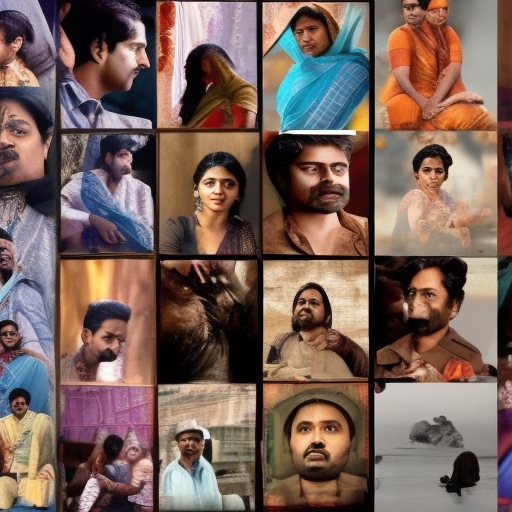Title: The Art of Storytelling in Indian Cinema: A Journey Through Time and Emotion
Introduction:
Indian cinema, often referred to as Bollywood, is renowned for its unique blend of storytelling, music, dance, and emotion. This rich tapestry of cinematic art has captured the hearts of millions worldwide, offering an immersive experience that transcends cultural boundaries. In this article, we delve into the art of storytelling in Indian cinema, exploring its roots, evolution, and enduring impact on global audiences.
Section 1: The Roots of Storytelling in Indian Cinema
The origins of Indian cinema can be traced back to the late 19th century, with the first silent films emerging in the early 1900s. These initial forays into celluloid storytelling were heavily influenced by Western cinema, adopting narrative structures familiar to global audiences. However, as Indian cinema evolved, it began to incorporate indigenous storytelling traditions, such as oral folklore, mythology, and real-life narratives, giving rise to a distinctly Indian cinematic voice.
Section 2: The Evolution of Storytelling in Indian Cinema
Throughout the 20th century, Indian cinema underwent significant changes, reflecting societal shifts and evolving audience preferences. The post-independence era saw a rise in socially relevant films, tackling issues such as poverty, inequality, and the struggle for independence. Simultaneously, musicals flourished, with songs and dance sequences becoming integral components of Indian cinema. This unique blend of drama, music, and dance continues to be a hallmark of Indian cinema today.
Section 3: The Art of Emotion in Indian Cinema
One of the most striking aspects of Indian cinema is its ability to evoke deep emotions in audiences. This emotional resonance stems from several factors, including the use of music, the portrayal of complex characters, and the exploration of universal themes such as love, loss, and redemption. Indian films often elicit a powerful emotional response, drawing viewers into the narrative and inviting them to empathize with the on-screen characters.
Section 4: Modern Trends in Storytelling in Indian Cinema
In recent years, Indian cinema has seen a shift towards more realistic and nuanced storytelling, with an increasing number of independent films exploring contemporary issues and challenging traditional narratives. Additionally, digital technology has revolutionized the industry, making it easier for filmmakers to experiment with different styles and formats. Despite these changes, however, the core elements of Indian cinema – its rich storytelling, emotional depth, and cultural relevance – remain steadfast.
Conclusion:
Indian cinema’s art of storytelling is a testament to the power of cinematic art to capture hearts, challenge perceptions, and bridge cultural divides. From its roots in oral folklore and mythology to its modern-day explorations of contemporary society, Indian cinema continues to captivate audiences around the world with its unique blend of drama, music, dance, and emotion. As we look to the future, it is clear that Indian cinema will continue to evolve, adapting to new technologies and audience preferences while staying true to its rich heritage.
👉 [Best Deals on Amazon!](https://amzn.to/abcd) | [Flipkart](https://fkrt.it/xyz123)
